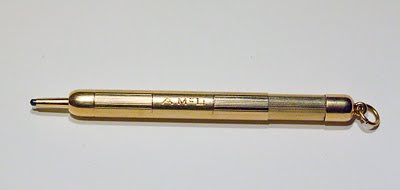Not long ago I clipped an ornamental crabapple branch as a model and never got to it. But, I did drop it into a glass of water and look what happened! :-) If the blossoms come through, we'll get a peek at them right here. More later...
My botanical art course officially opens on Monday. This evening I placed my introduction out on the web site. As I promised that you will be following along with me as I work my way through, here I share with you my intro:
Hello everyone!
I'm John from Bridgewater, Massachusetts and truly excited to be here. But, it did take me a few weeks to finally join up. I came up with all kinds of excuses not to take this course, but all the time I really knew that I was nervous about putting myself on the line, about exposing my work as a true beginner.
I've been interested in botanical art for a couple of years and tried to jump in with watercolors. But without experience in drawing, light and shade, and perspective, I struggled and then gave it up. In December I picked up a pencil and drew a Bosc pear that actually looked like a pear! I was hooked! Since then I have been drawing every day, mostly with dried leaves, and having a wonderful time. I now feel like drawing is a part of my life and I hope to build my abilities. I must say that the pen and ink leaves me with a bit of trepidation but I'm ready to give it a go.
At fifty-six years old, I'm in that pre-retirement planning mode and the idea of delving deeply into botanical drawing and painting seems most inviting. I'm hoping that this course gives me a good push in the right directions towards that goal.
-- John
And lastly, here's a little bit of progress on the ivy. Soon I will need to balance out the tones and work out some selective shading. (As you can tell, I'm still working on the scans.)
p.s. The comments display misbehaved today, refusing to let go of a spam comment that I had earlier deleted. Not sure yet if it will return. Perhaps something new can take it's place... But, please, please, keep commenting! I love 'em! :-)















































